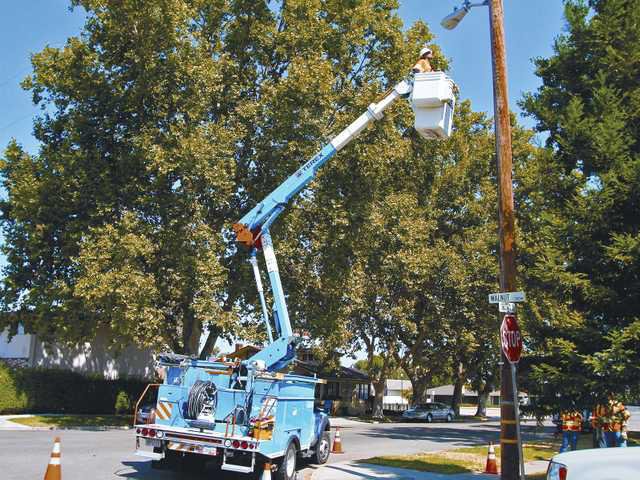Jeff Kestly knows that when it comes to natural gas leaks, well-trained first responders can be the difference between a simple inconvenience and an all-out disaster.
And after Monday night Manteca has more than its fair share of well-trained first responders.
Organized through PG&E’s public safety outreach office, representatives from the Manteca Fire Department and Manteca District Ambulance joined dozens of volunteers from the Community Emergency Response Team to learn the ins-and-outs of handling gas and electrical hazards as they present themselves.
There are more than 40,000 miles of natural gas distribution pipeline weaving its way through California. They serve 4.2 million customers that are also served by 6,700 miles of transmission pipeline that access the state from the Oregon and Arizona borders. That’s why it’s not unlikely that a scenario involving an active gas line won’t present itself in the future.
How to deal with the situation when it arises and how to work to prevent those problems from occurring in the first place are what Kestly, a retired fire chief from Selma, hopes that training sessions like Monday night’s get across.
Some of the most important issues touched on include:
• Dialing 811 before digging to make sure the area is clear of underground utilities. A national service, making the phone call is actually a legal requirement – two business days are needed before digging can begin – for everybody from construction companies looking to sink a new sewer line to the recreational gardener planting a new tree. Most lines are buried more than two feet beneath the ground surface, but not always.
• Keeping an eye (or a nose) out for anything out of place. While pure natural gas is colorless and odorless, methyl mercaptan is added to give the distinct, sulfur-like smell that makes detecting a leak possible. But the smell doesn’t always have to be present. If a pipe has a leak and the gas seeps up to the ground, the dirt can act as a filter. That allows for buildups to possibly occur the same way that carbon monoxide does without detection. Sudden dead-spots where vegetation was once prevalent and bubbling in puddles are also possible signs of a leak.
• If you suspect a gas leak, be conscious of ignition sources. If enough gas is built up something as simple as the doorbell or the flip of a lightswitch could provide the energy necessary to explode. Commonly overlooked sources include automatic timers – motion detectors – as well as static electricity generated from shoes rubbing on doormats.
PG&E shares tips to prevent leaks from becoming disasters





